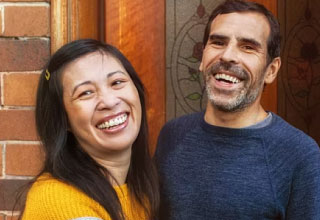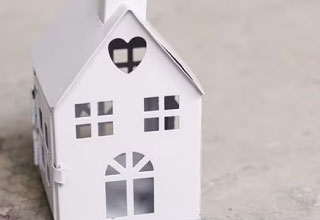- text
-
Cover and benefits are subject to eligibility criteria and terms and conditions, including the limits and exclusions of the insurance policy. Any advice provided is general only and may not be right for you. Before you purchase this product you should carefully read the Home Insurance Product Disclosure Statement and consider the Target Market Determination to decide if it is right for you.
Keep Your Kids Safe at Home with this Indoor/Outdoor Safety Checklist
Children up to the age of 7 are constantly at risk of being injured in and around the house. A large part of this risk comes with being a toddler or child learning about the world for the first time, but as parents there is a lot that we can do to help minimise or eliminate these risks. Making sure the home environment is as safe and child friendly as possible doesn’t have to be a chore, it really is a case of looking at your home from a slightly different perspective with some added common sense.
Think ahead and be prepared
Creating a child friendly home begins well before you install child locks on the kitchen cabinet doors and barriers on the stairs. In fact, it is quite often completing those jobs you’ve been meaning to do or just plain forgotten about. The best way to be prepared is to ask yourself “what if?”
- Do you have an emergency contact list, and is it up to date and readily available?
- Do you know the Poison Information Centre emergency phone number? It’s 13 11 26!
- Do you have smoke alarms installed and are the batteries current? Have you got a fire extinguisher or even an evacuation plan in place? (And no Dad, grabbing 3 kids, 2 cats, a dog, and the hard drive of photos as you leapfrog the couch in your undies does not constitute an ‘evacuation plan’.) A great website to visit is www.fire.nsw.gov.au where you’ll find fire home and safety tips as well as information about preparing an escape plan.
Child safety indoors
Look around your home with a critical eye. It is up to you to identify all possible dangers because your children cannot. A good way of making sure you don’t miss anything is to get down to ‘toddler’ level. Granted it’s agony on the back, but when you see the world from a small child’s perspective you start to notice things you would never have noticed had you stayed on your feet.
Some of the more common things you should look out for include (but are not limited to):
- Doors that can slam shut – use stoppers to prevent doors slamming or place child locks/latches on them to prevent them being opened in the first place.
- Stairs and ‘no go’ areas – Install Child Safety Gates at the top and bottom of the stairs and at the entrance to the garage or any rooms where you would rather your small child did not go by themselves. As a parent you’ve only got one set of eyes so close the doors to any rooms you are not in – eliminating the need to have eyes everywhere.
- Sharp corners & tripping hazards – Be sure to remove all tripping hazards (upturned carpet, loose cables, etc) and be wary of the height of bench corners and other furniture with sharp edges. Apply corner protectors where applicable.
- Heavy furniture – Plasma TV’s and larger bookshelves pose a potential threat to young children as they could pull a cord or climb on shelves and cause these items to fall. It is recommended that larger bookshelves be screwed to the wall and large LCD/Plasma TVs be mounted to the wall.
- Electrical outlets – Electricity is not something that should be messed with – by anyone! Make sure that all electrical cables are stored neatly and power is turned off at the mains when not in use. Fit electrical covers to any accessible (low lying) outlets.
- Heaters and fans – Make sure that all heaters and fans have adequate protection to protect small fingers from being poked through grills.
Keep a child friendly kitchen
Keep sharp knives and other dangerous implements away from the edges of kitchen benches so curious fingers can’t find them. Put child locks on drawers and cupboards that store cleaning products or contain cutlery or other sharp implements. And when cooking, ALWAYS point the pot and pan handles away from the edge of the bench.
Tea, coffee and hot liquids too close to the edge of kitchen benches account for over 300 scalds in the Royal Children’s Hospital burns unit every year.
(Source: kidsafeqld.com.au)
Keep a child friendly bathroom
Make sure you put a child lock on the under-bench bathroom cabinets as dangerous items are often stored here – from bleach and other cleaning products to razors and even perfumes (these contain alcohol).
Hot water can also be a significant hazard, so installing a device to prevent the hot water exceeding 50 degrees Celsius can be an excellent solution. If this is not a feasible option, place child proof covers on the taps so inquisitive children cannot turn them on without your help.
Cyber safety
Often overlooked, but becoming more and more important to making your home child safe and kid friendly, is the part you can’t see.
Making sure your children are safe online is a parent’s responsibility and, as your children get older, we recommend you place restrictions on when and what they can access.
Maintain a child friendly garden
- Fences and gates - Make sure all fences and gates are secure and don’t have any child sized holes in them. It is also important to make sure any gates are lockable and have child-proof locks that are out of reach.
- Pools and pool fencing - The dangers of having an un-fenced pool and children around are well reported. I urge all parents with children and pools to ensure secure and ‘legal’ pool fences, gates and locks are installed by a professional and all steps are taken to protect any child in your home from pools and water. New regulations for pool security and maintenance now exist, so it is important to make sure if you are a pool owner, you are fully informed of these. It is also important to ensure your pool is registered. This site also has a great checklist for pool barriers. Be aware that fencing laws may vary between states, so be sure to refer to the guidelines specific to where you live.
- Poisonous plants and animals – There are a number of poisonous plants and animals that pose a threat not only to children but to anyone who ventures outside. Playing outside is an integral part of your child’s development, so it is important to let them run outdoors and let their imaginations run wild. The best thing you can do is to be aware of all the potentially dangerous plants and animals in your area, have any suspicious looking plants checked out (your local nursery can be a great help with this) and conduct regular pest inspections.
Children need space to grow, learn and explore. As parents it is up to us to make sure they can do so in an environment that is as stimulating but safe as possible.





